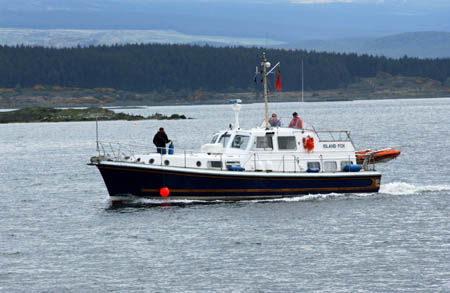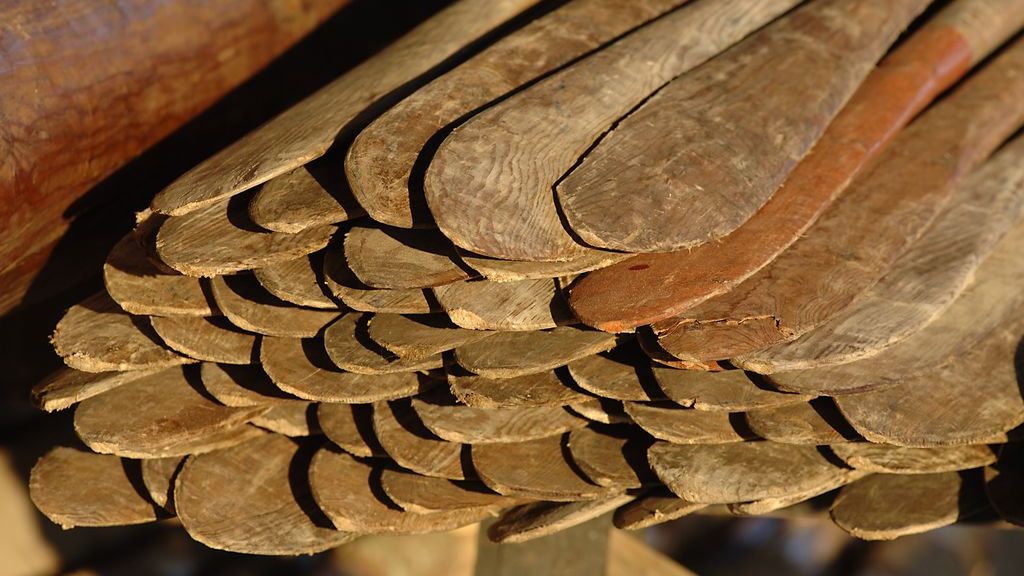Sunday 1st of July the world’s largest reconstruction of a Viking ship will leave the Viking Ship Museum in Roskilde, Denmark, and start a historic 1,000 nautical miles expedition to the Irish capital, Dublin. An adventure no one has endured for the last 900 years or so.
Media, the public and even crew members on board the Sea Stallion have focused on the North Sea crossing as the most challenging part. Reality may well be that this first phase of the expedition turns out to be the easiest to overcome, however. The hardships at open sea in a ship like the Sea Stallion are not to be neglected – yet strong currents, violent tides and unpredictable weather close to unfriendly rocky shores are even greater risks for a sailing ship.
As the Sea Stallion approaches the coasts of northern Scotland it also engages with the most dangerous waters of Europe – in fact some of the most challenging in the world.
In order to keep security at its highest the Viking Ship Museum in Roskilde has engaged Seatrek Training from Ardrishaig, Argyll.
“Most likely we will join the Sea Stallion at the Orkney Islands. And will facilitate the Viking ship with a support vessel for the second phase of the expedition. The vessel will be the ‘Island Fox’ – a Nelson 45’ twin engined motor cruiser. The Nelson is renowned for its sea keeping qualities and will cruise up to 16 knots with a top speed of 20 knots,” Seatrek director John Robertson explains.
Important local knowledge
The Viking Ship Museum got in contact with Seatrek Training through a local contact person at Orkney Islands. John and Lesley Robertson’s intensive knowledge of the challenging waters of Scotland and Ireland fitted perfectly with the demands of Sea Stallion skipper, Carsten Hvid. Still, even for Seatrek Training this task is quite extraordinary:
“We have worked as support before but not over the distances that we will be covering on this trip. ‘Island Fox’ will be responsible for safety cover for the Sea Stallion and her crew in the event of anyone falling overboard, being ill or requiring a respite from the Sea Stallion. ‘Island Fox’ will also be used in the event of the Viking ship being in difficulties. She will give radar cover, communicate with the skipper of the Sea Stallion and liaise with the Scottish and Irish authorities and relevant landowners to facilitate shore based landings,” John Robertson explains.
In the event of anyone becoming ill the ‘Island Fox’ offers the facilities for a berth aboard and if necessary she can transfer ill Sea Stallion crew members ashore for hospital treatment.“
The ‘Island Fox’ will even carry spare medical supplies and if necessary limited food provisions. And last but not least she will also be conveying television crew and facilitate media coverage”.
“Anything can happen!”
John Robertson points out weather to be the major obstacle for the Sea Stallion expedition from Orkney Islands or another port in northern Scotland to Dublin:
“The weather in July and August can be unpredictable although we would expect reasonable weather climate for that time of year. The prevailing winds are generally south west up to a strong breeze with occasional high pressures further south with no wind. However, lately anything can happen!”
And the difficult waters of course.
“Some of the waters through which the Sea Stallion crew intend to sail are the most dangerous in Europe.
There are several areas that are equally dangerous but for different reasons and I would consider them all challenging. They are in order: The distance from Orkney to Cape Wrath, Cape Wrath through the Minch, the tides around Sky, Ardamurchan Point, the currents around the Corryvreckan and the North Channel”.
“A fine ‘lucky’ ship”
Sunday the 6th of May the Viking Ship Museum held an international press conference with approximately 40 media from Europe and North America participating – including the BBC, the national television of Denmark and the Irish RTE.
Among the VIPs specially invited were John and Lesley Robertson.
“When we were first contacted we felt it was an incredible expedition to undertake. Our visit to Roskilde was informative and answered a lot of questions that we had. The museum and its staff were friendly, helpful and enthusiastic about us being there,” John Robertson says.
“The ship it self is beautiful and a fine ‘lucky’ ship – a huge credit to the boat builders and all those involved in her construction. Looking at the crew and talking to some of them I admire their enthusiasm and I feel that some of them really appreciate what it could be like at sea on the Sea Stallion”.
“The expedition has got to be rated as one of the biggest history, boat building and seamanship research studies in recent times. The expedition will also give an insight in how modern man and woman deal with such an environment and lack of privacy. We at Seatrek are enthusiastic being able to be part of the expedition as support vessel,” John Robertson states.



